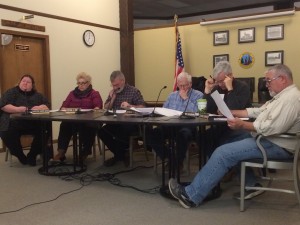During a Notice of Intent hearing at the March 9 meeting of the Marion Conservation Commission, commission member Jeffrey Doubrava questioned Brian Grady of G.A.F. Engineering, Inc. on how effective breakaway walls would be if used on new construction proposed at 20 Front Street.
The applicant, Ann Severance, is planning to raze the existing home and build a new house on the site. Located in a coastal flood zone, the architect designed the new structure with breakaway walls around the slab on the seaward side, Grady explained.
However, Doubrava thought the property fell under coastal zone A, not AE as shown by Grady. Furthermore, Doubrava wondered why breakaway walls were only planned for the seaward side of the building.
This prompted Doubrava to question whether the breakaway walls would be functional.
“It appears the walls wouldn’t work as they should,” Doubrava said. He felt that the breakaway walls would simply float the crawl space and leave the house to possibly “explode” during a storm event.
Commission member Steve Gonsalves thought otherwise, saying, “I’m sure the architect has worked with the codes.” Grady acknowledged that to be the case.
Gonsalves hinted that the Conservation Commission shouldn’t be pondering building codes. Doubrava said, “We have a separate obligation to make sure it is designed properly.” Chairman Norm Hills agreed with him.
On another matter related to the application, Doubrava asked if wetlands delineations had been updated. Grady said that those had been done three or four years ago. Doubrava asked, “Why would you do a NOI and not do a wetlands delineation?”
“In my opinion, the existing flags looked reasonable,” said Grady.
There was little discussion during their ruling on the application as the commission agreed to issue an Order of Conditions that included protection of wildlife habitat, placement of boulders along a ‘no touch zone,’ and delineation of wetlands.
Michael Campagnone of CLE Engineering represented his clients Greg and Nancy Johnson, 406 Point Road, in their Request for Determination of Applicability for the installation of a new septic system.
Campagnone said the home would have a system capable of handling four bedrooms and that two Board of Health variances would be needed given the groundwater separation issues and position of the new system. Campagnone also said the new system would meet the requirements of the Massachusetts Department of Environmental Protection.
The commission gave a Negative 3 ruling to the applicants.
A continuation was ordered for a RDA requested by Nicholas Mitcheson of 18 Wilson Road. Mitcheson plans to build an 18- by 26-foot addition with two floors of living space.
The property is located in an AE flood zone, Hill noted, causing him to question the proposed height evaluation of the addition as well as the size.
Mitcheson said he had been told that, as long as the project stayed below 50 percent of the assessed value of the home, newer height evaluations for flood zone buildings were not applicable. Hills was unsure and requested that the applicant return with more conclusive documentation including the assessed value of the property. The hearing is continued until the next meeting.
In other business, the commission offered their comments to the open space survey drafted by the Master Plan Parks, Recreation, and Open Space Subcommittee. Hills said the plan did not address jurisdictional areas and also needed language to address invasive plant species that thickly cover much of Marion’s current open spaces. The commission members also felt the draft was too long.
The next meeting of the Marion Conversation Commission is scheduled for March 23 at 7:00 pm at the Marion Town House.
By Marilou Newell
